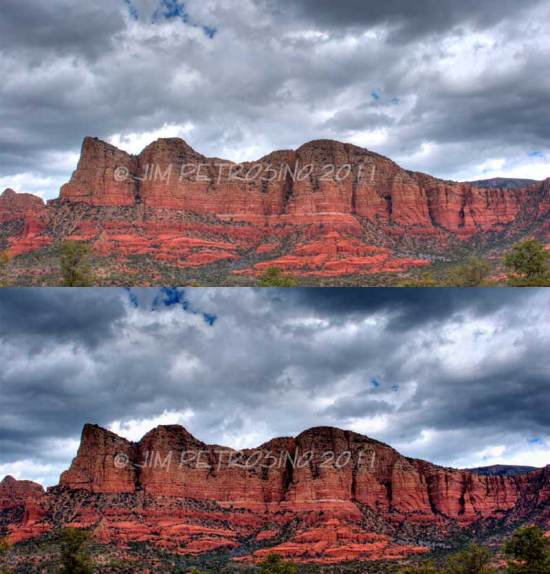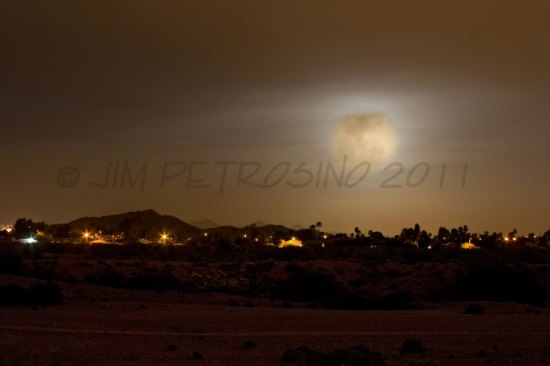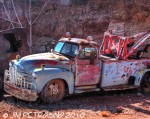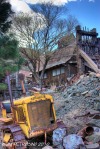Press Printed Photo Books
June 1, 2011 at 2:12 pm | Posted in Photography | Leave a commentTags: Arizona, Books, Custom Photo Books, Design, Designer, Digital, Phoenix, photographer, Photography, Press Printed Books
Modern technology is great. No longer do we have to stuff photos into pre-sized plastic slots in a traditional photo album, or worse yet; stick them into those “magic magnetic” albums that turn everything yellow over time. We have better options.
One of those options is press-printed books, and it is one of my favorite things to do with pictures. It is like “scrapbooking”, only it takes place in the digital realm and the pictures are actually printed onto a page with high-tech printing presses and then bound together to be a one-of-a-kind coffee table style book.
No more loose pictures, no more yellowing, no more cutting out hand-written captions and glue-sticking (yikes! art-destroyer alert!) them to a page.
Press books can be as simple as you want, or as elaborate as you want. The covers can be fabric, leather (real or faux), or have a photo printed right on them! They can also be a combination of the above…perhaps leather with a cutout to reveal a photo below.
They differ from a traditional wedding album in that they aren’t actual photos printed on a photographic paper and then bound to a page. They are printed on the page, and that page can be matte, glossy or pearlescent. The choice is yours. Artwork and captions can be added easily, during the design phase. Once again, they are printed right on the page. The pages are designed as a single image, and it can span across pages if you want. The images above are what they look like during the design phase. Each image is spanned across two pages. If you would like to see the images as they appear in the actual book – check my facebook page.
Canvas Prints – Big, Bold, Beautiful
May 31, 2011 at 2:15 pm | Posted in Photography | Leave a commentTags: Canvas Prints, Color Enhancement, Fine Art, Large, Photography, Services
One of the products I offer is canvas prints. They come in all kinds of sizes, from small to huge. A big advantage of canvas prints is that they don’t require framing, which can get really expensive with large pieces; especially if they are a non-standard size.
Canvas prints are a great way to feature one of your prized photos of the family, or display a beautiful vacation photo prominently in your home or business.
There are many places you can get canvas prints made from photos you already have, but there are a lot more options and benefits if you have it done through a professional photographer like me. High quality canvas prints come with a dizzying array of options available from size, to depth, to canvas thickness, and special coatings to protect them from hazards like UV and fingerprints.
If you drop off a photo (digital or printed) at your local megamart and have them turn it into a canvas because it is cheap; you are probably not going to get the best quality you can. Quality counts on large pieces! You want the best you can afford, and it helps to discuss your options with someone who understands them and can make suggestions based on where you want to hang the piece and the impact you want it to make.
You want the piece to be big, bold and beautiful. Not big and cheap-looking.
Another drawback to using a drop-off service is that most of the work is done by machines and humans that aren’t looking out for your best interest. They are just running the piece through the mass-production-mill. Things like color balance might be adjusted, but they aren’t adjusted by hand to accentuate the piece itself; they are adjusted to a one-size-fits-all “best case scenario”.
In the photos above, you can see that the colors and tone of the picture (not to mention the dimensions) were adjusted to precisely what I wanted them to be. I could do this, because I took the time to find out where the piece was going, and the statement it was supposed to make. A photo that is going to end up almost three feet wide needs to be treated differently than something that will be six inches wide and tucked away into a photo album. One will get seen by everybody, all the time. You must keep that in mind.
SuperMoon 2011
March 20, 2011 at 6:29 pm | Posted in Astronomy, Photography | Leave a commentTags: 2011, Full, Image, March, Moon, Picture, Prints Available, Super Moon, SuperMoon, Worm Moon
It’s been awhile since I blogged, but I thought I’d toss up a shot of the moon at it’s closest to Earth in 18 years. These were taken over a river wash in Phoenix, about 7:20pm MST on March 19, 2011.
Some people call it a SuperMoon, or Super Moon. That means it is at its closest to Earth in orbit, and is full. If you would like prints of this image – just let me know via email, or my contact page here. You can also check out my website at http://www.petropix.com
Thanks for viewing!
Jim
Gold King Mine and Ghost Town
March 16, 2010 at 2:02 pm | Posted in Blogging, Photography | Leave a commentTags: Antique, Arizona, Ghost Town, Jerome, Machinery, Mine, Mining, Mountain, Petting Zoo, Trucks, Vacation
Spring is in the air, which means summer is right around the corner. In Phoenix that means it’s time to get to higher ground or the ocean. If you opt for the former then why not head two hours north and check out Jerome? Sure, there’s a “Main Street” area where all of the tourists hang out but if you follow the signs you can head a couple of miles outside of the crowds and explore what used to be Haynes, Arizona.
It is a privately owned attraction that features antique machinery and an abandoned mine. Some of this machinery works! That includes a 10,000 cubic inch engine which used to power a small town and a giant saw mill. There’s plenty of trucks, cars and tools lying in rust waiting for the owner Don Robertson to get around to fixing them up and turning them from rust buckets into show cars.
In addition to the rusty metal items are some old wooden buildings. There is a dental office, a schoolhouse and even a bordello. None of them are still operating, but they are picturesque. If you have kids with you they will delight in feeding the animals at the petting zoo. Sodas and trinkets are available in the gift shop.
Sedona in HDR
March 15, 2010 at 2:04 pm | Posted in Blogging, Flickr, Photography | Leave a commentTags: Arizona, Blue, Caterpillar, green, HDR, High Dynamic Range, Jerome, Mine, Mountain, Photography, Red, Sedona, Tractor, Trucks
This weekend I went to Sedona for a wedding. So, of course I took my cameras. I decided early on I was going to shoot it a bit differently than I normally do, this time. I set the trusty Canon to Aperture Priority and turned my Auto Exposure Bracketing on.
Three shots, spaced between 1 and 2 stops apart. That was how I shot everything. Why? Well, Sedona is famous for its red rocks and blue skies. Since it had just rained, that meant lots of greens on top of the reds. Add to that some puffy white clouds and shadows and you have a lot of dynamic range to try and capture with a digital camera. I wanted to see if I could accurately capture all the mountain details without blowing out the sky or resorting to any camera filter other than the circular polarizer I brought along.
Now, I’m not going into all the details of HDR (High Dynamic Range) photography, bracketing (AEB) or why the mountains are red. I’m just going to say it was a great time and share a couple of shots with you.
- Antique Wrecker in Jerome Ghost Town
- Mountain in Sedona
- Tractor at Gold King Mine in Jerome
If you have seen HDR before, you may be expecting to see really vivid, almost cartoonish colors here. You won’t. This is a real landscape and the bracketing and HDR composites have been made with that in mind. I wanted to show you that HDR doesn’t have to look surreal. It can be used to capture and display all the details your eyes see. As I mentioned, in Sedona that means lots of red, green and blue. It just so happens to be colors your camera is made to capture. The bracketing is perfect for sucking details back into the pictures.
Symphonic Zeppelin and Queen
January 30, 2010 at 12:47 pm | Posted in Concert, Photography, Review, Rock, Symphony, Theater/Theatre | Leave a commentTags: Dodge Theatre, Livenation, Orchestra, Phoenix Symphony, Rock
Another night using the light rail to get downtown to Dodge Theatre has passed. This time it was to check out the music of Led Zeppelin and Queen with a full rock band and the Phoenix Symphony.
The show was pretty amazing. Symphonic rock bands are nothing new, but it’s always nice to go see and hear a symphony without having to get all dressed up beforehand.
I’m not sure why this is at Dodge and not Symphony Hall, but since I have season tickets to Dodge it worked out well for me. As well as can be expected without the orchestra in a proper pit anyhow. It’s really difficult to capture the nuances of an orchestra when a lot of their sounds are being sucked up by stage curtains and overshadowed by a lead guitarist. Don’t get me wrong, the guitarist was very good and has obviously spent a lot of time recreating the exact tones of Jimmy and Brian but last night’s performance was a little harsh on the ears in the high-mid frequencies. Not sure whether I should blame the player or the sound engineer there. Either could have alleviated that problem.
Conductor Brent Havens did a great job, considering he is touring around and working with a different group of musicians each day. He was also kind enough to step aside at one point and let an audience member come up and conduct a song! Her name was Morgan, and she did a pretty awesome job for an amateur maestro, so props to her.
The show is divided into two parts. The music of Queen and then Zepp after an intermission. All the players remain the same except for the lead singers. Randy Jackson does Zeppelin and Brody Dolyniuk fronts the Queen portion of the show. At one point electric violinist, Allegra, joins in on the fun. Powell Randolph, drummer, even pounds the skins bare-handed Bonham-style during the obligatory Zeppelin drum solo.
 Lighting and sound were minimal, but adequate. They tossed in some good effects from the movable lights, and did some nice guitar panning during key points of guitarist George Cintron’s shining moments. The audience even showed its knowledge of symphony protocol by providing standing ovations a few times, and remaining seated the rest of the time. Of course, we all stomped and clapped along at the appropriate times and a few even brandished lighters, not cellphones, during the last song. That was a welcome sight. All in all – it was a pretty good show and I’ll definitely check it out when it tours again.
Lighting and sound were minimal, but adequate. They tossed in some good effects from the movable lights, and did some nice guitar panning during key points of guitarist George Cintron’s shining moments. The audience even showed its knowledge of symphony protocol by providing standing ovations a few times, and remaining seated the rest of the time. Of course, we all stomped and clapped along at the appropriate times and a few even brandished lighters, not cellphones, during the last song. That was a welcome sight. All in all – it was a pretty good show and I’ll definitely check it out when it tours again.
Modern 3D Formats – What’s the Difference?
January 20, 2010 at 1:00 am | Posted in Movies, Photography, Theater/Theatre | 1 CommentTags: 3D, Avatar, Digital, Dolby, Film, Glasses, IMAX, Modern, Polarized, projection, Real-D, RealD
Let’s get one thing straight right from the start. I’m talking about modern 3d Cinema here, not the old-school stuff with the different colored lenses, nor some DVD you are trying to watch on your home television.
Modern 3d, a la Avatar, is done with a little more finesse nowadays. 3D nowadays is usually done with polarized lenses, not colored jobbies. Yes, polarized, like a camera filter or those cool fishing glasses that let you see into the water. Same idea. Every company has a slightly different take on it…this is how patent lawyers stay in business.
The differences are in the details.
Real-D uses a circular polarization. That gives the benefit of being able to maintain the third-dimension illusion if you tilt your head. It’s digital. It uses one projector. Movies can be transmitted to the theater, or sent on esy to transport and store materials. That means its relatively cheap to upgrade a theater to incorporate. It also means that a theater must use a silver screen (as opposed to current tradition of white) for the best effect, otherwise too much light gets lost and the movie gets dark. The big advantage to us is: it’s sharp. No dust bunnies on the film, as there is no film. The disadvantage is, its just a bit higher resolution than your HDTV and its way bigger.
Traditional IMAX…uses really big film. 70mm film, but it is shown sideways as opposed to vertical, so it has a massive area. It is 15 perforations wide, as opposed to the 5-wide it would be if it was vertical. See…BIG. That means BIG Screens (5 or more stories high and 7 or more stories wide). That also means big equipment like forklifts and specially trained personnel to work all the fancy gizmos in the projection booth. Of course, that means big overhead expenses – hence big ticket prices. Disadvantages to the audience, besides high prices, are: you can’t tilt your head and maintain the illusion. If your theater uses fancy electronic shutter glasses (not sure any still do) they are bulky (although cool from a techie standpoint). Seating is different than what you are used to. Your ankle will be at the level of the head in front of you…steep seating angles, a disadvantage if you are in a wheelchair or are mobility impaired. The advantage of IMAX? It’s BIG. It has totally awesome uncompressed audio tracks pumped thru massive multi-channel surround systems. Totally immersive. It’s on film. Resolution is NOT a problem.
Multiplex IMAX (referred to by some as minimax or LieMax) is a new creation. Some are digital, some are true IMAX film. The system is designed to retrofit multiplex and mall theatres. The screens are NOT massive like traditional IMAX. The seating is somewhere between your normal theater and the highly-raked traditional IMAX. The price is probably more than a competing 3D format across the hall, maybe as much as a traditional IMAX. If its a digital IMAX, it will use 2 projectors, rather than one. This may be brighter than the competitors in theory, but has some drawbacks in actual practice if things aren’t “just so”. Still can’t tilt your head, due to the linear polarized glasses IMAX likes so much.
Dolby 3D: Similar in concept to REAL-D, with some minor technical differences…you can look up more details yourself if you really care to. Keep this in mind…Dolby likes to patent processes. They have a certain way of doing things. Those things have a way of sticking for the long haul. Tape recorders ended up with Dolby C and/or B, your A/V receivers at home have Dolby Pro Logic or Dolby Digital, or those plus Dolby-“whatever”. They become the standard in a lot of media applications! James Cameron used this 3D format at the Avatar world premier (although tweaked a bit from what you might find at your local multiplex). ‘Nuff said.
Xpand 3D: Don’t know what to say here. Haven’t seen it. The Hollywood Arclight Dome (a favorite amongst movie buffs) is using it for Avatar with mixed reviews. Not sure how astute or trustworthy those reviewers are. Word has it that Disney, PIXAR and ILM have this sytem in their screening rooms. I wouldn’t count these guys out just yet. I’m sure Lucas is working on a way to try to one-up Cameron…so…keep your eyes on these guys. Keep in mind that REAL-D has an immense foothold on the majority of current theatres…but that’s not to say that this one won’t sneak into some “premier” locations…heck its going thru a trial by fire at the Dome as we speak.
Digital 3d: Anybody’s guess as to what’s driving this generic stuff. One local theatre chain here is using all-digital Barco projection equipment that is getting rave reviews and the theatre tells me the 3D system there is made by Imagemaster. Seems to be a REAL-D-like system made by a small upstart company and is cheaper than any of the “big names”.
So, now that you have a primer…go see Avatar, again. See it differently than you saw it last time. Back in the day Lucas marketed THX with “The Audience Is Listening”…well…when it comes to 3D formats nowadays, the Difference is in the Details. The levels of brightness and immersiveness are something you have to experience for yourself. I personally love traditional IMAX with its ultra big, ultra bright film, ultra-enveloping-sound but I really enjoyed the way REAL-D drew me into the film, rather than thrust it out at me.
Blog at WordPress.com.
Entries and comments feeds.























